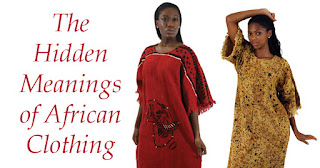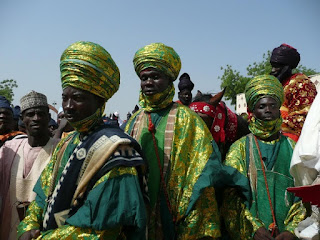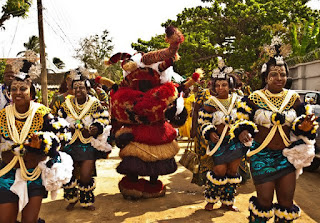ABOUT AFRICA CLOTHING
Introduction - African Clothing
The
African continent is a wonderfully diverse place with an incredible array of
people, animals, and places. Traditional African garb is as diverse as the
African continent itself. From the loose-fitting outer robe called Djellaba
worn by men and women in North Africa to the bright and colorful Madiba shirts
worn in South Africa there is an incredible variety of clothes. Archaeologist
estimate people in Africa started wearing clothes soon after the first homo
sapiens evolved approximately 180,000 years ago.
This was probably out of
necessity due to the start of the ice age and the need to stay warm. These
early clothes were usually made from leather or fur. Over thousands of years
African clothing has evolved to where it is today. Most of the clothing is
beautiful, rich in color and design, and made from the natural resources
available to the people.
Materials Used to Make African Garb
Traditional
African clothing is made from a wide variety of materials some examples are:
- Adire (tie-dye): Made by Yoruba people
- Aso oke fabric: Woven by Yoruba people
- Barkcloth: Made by the Buganda tribe
- Kente cloth: Woven by Ashanti
- Kitenge: Made in Kenya and other East Africa countries
- Mudcloth: Produced by the Bambara tribe
Traditional African
fabric is always hand-made using techniques that have often been passed down
from generation to generation for thousands of years. The patterns and colors
are also often deep with tradition. The patterns were often used to distinguish
one African tribe or group of people from another.
The Making of African Clothing
The
making of fabric was usually done by both men and women, with men doing the
weaving and women the spinning and dying. Often the various steps of making
fabric had spiritual or religious importance. For example the Dogons believed
that each stage of the fabric making process is a symbolic analogy to human
reproduction and resurrection. The Dogons also believed that the spinning and
weaving of clothes should never be done at night, to do so would weave silence
and darkness into the cloth.
Popular African Garb Colors
The
following is a list of some of the main colors found in African clothing
followed by their meaning to the African people. These are generalizations.
- Gold: Gold is an extremely popular color. It represents wealth and fertility.
- Red: Red represents tension in the spiritual or political world and is viewed as the color of blood.
- Blue: Blue represents love and peace, it symbolizes the sky, and is a harmonious color.
- Green: Green represents prosperity and life and is also a medicinal color.
The Africans took the
meanings and spirituality of the colors in their cloth very seriously.
Types of African Clothing
As
mentioned earlier there is an incredible variety of clothing in Africa. Below
is a list of some of the clothing types found in Africa.
- Abacost
- Alasho
- Aso Oke hat
- Balgha
- Bogolanfini
- Boubou
- Dashiki
- Djellaba
- Ethiopian suit
- Ghanaian smock
- Gomesi
- Gowni
- Head tie
- Headscarf
- Isiagu
- Kanga
- Kanzu
- Kiondo
- Kitenge
- Kofia (hat)
- Koto
- Kufi
- Lamba
- Madiba shirt
- Mask
- Mitumba
- Senegalese kaftan
- Tagelmust
- Turkish cap
- Wrapper






Comments
Post a Comment
Please leave your comments with us to enable us serve you beter